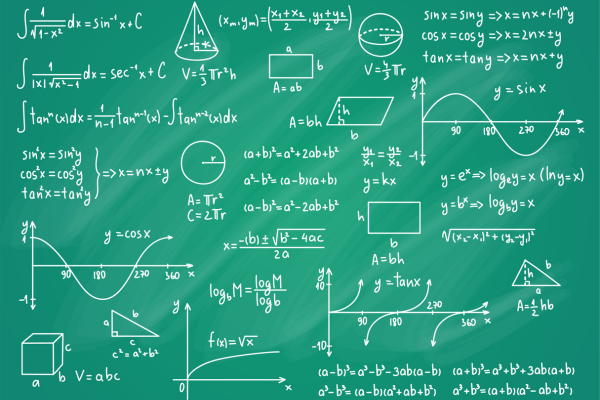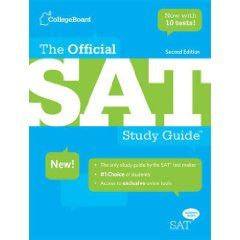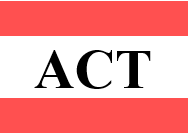Preparing for the SAT or ACT math section can feel overwhelming, but mastering the right formulas is your key to success. While both tests provide some formulas, knowing these essential concepts by heart will save you precious time and boost your confidence on test day.
Whether you’re aiming for a perfect score or just looking to improve your math performance, these 10 formula concepts appear consistently across both standardized tests and form the foundation of mathematical problem-solving you’ll encounter.
1. Quadratic Formula and Factoring
The Formula: x = (-b ± ?(b² – 4ac)) / 2a
The quadratic formula is your go-to tool for solving any quadratic equation in the form ax² + bx + c = 0. While factoring is often faster when possible, the quadratic formula works for every quadratic equation.
When to Use:
- Solving quadratic equations that don’t factor easily
- Finding x-intercepts of parabolas
- Optimization problems involving maximum and minimum values
Pro Tip: Always check if a quadratic can be factored first (like x² – 5x + 6 = (x-2)(x-3)) before using the formula, as factoring is typically faster.
2. Distance and Midpoint Formulas
Distance Formula: d = ?[(x? – x?)² + (y? – y?)²] Midpoint Formula: M = ((x? + x?)/2, (y? + y?)/2)
These coordinate geometry formulas are essential for solving problems involving points, lines, and shapes on the coordinate plane.
Common Applications:
- Finding the length of line segments
- Determining the center point between two locations
- Calculating perimeters and areas of geometric figures
- Solving circle equations and geometric proofs
3. Slope and Linear Equations
Slope Formula: m = (y? – y?) / (x? – x?) Point-Slope Form: y – y? = m(x – x?) Slope-Intercept Form: y = mx + b
Understanding linear relationships is crucial for both algebra and coordinate geometry problems.
Key Concepts to Remember:
- Parallel lines have equal slopes
- Perpendicular lines have slopes that are negative reciprocals (m? × m? = -1)
- A slope of zero indicates a horizontal line
- An undefined slope indicates a vertical line
4. Circle Equations and Properties
Standard Form: (x – h)² + (y – k)² = r² Area: A = ?r² Circumference: C = 2?r
Circle problems frequently appear on both tests, especially in coordinate geometry sections.
Essential Applications:
- Finding circle centers and radii from equations
- Calculating areas and circumferences
- Determining if points lie on, inside, or outside circles
- Solving intersection problems with lines and other circles
5. Triangle Properties and Trigonometry
Pythagorean Theorem: a² + b² = c² Area of Triangle: A = (1/2)bh Special Right Triangles:
- 45-45-90 triangle: sides in ratio 1:1:?2
- 30-60-90 triangle: sides in ratio 1:?3:2
Basic Trigonometric Ratios:
- sin ? = opposite / hypotenuse
- cos ? = adjacent / hypotenuse
- tan ? = opposite / adjacent
These concepts are fundamental for geometry problems and appear regularly on both tests.
6. Exponential and Logarithmic Functions
Exponential Growth/Decay: y = a(b)? Logarithmic Properties:
- log(xy) = log(x) + log(y)
- log(x/y) = log(x) – log(y)
- log(x?) = n·log(x)
Key Applications:
- Population growth and decay problems
- Compound interest calculations
- Scientific notation and order of magnitude
- Solving exponential equations
7. Polynomial Operations and Factoring
FOIL Method: (a + b)(c + d) = ac + ad + bc + bd Difference of Squares: a² – b² = (a + b)(a – b) Perfect Square Trinomials: a² + 2ab + b² = (a + b)²
Understanding polynomial manipulation is essential for algebraic problem-solving and simplifying complex expressions.
8. Systems of Equations
Substitution Method: Solve one equation for a variable, substitute into the other Elimination Method: Add or subtract equations to eliminate a variable
Matrix Applications: Both tests may include problems solvable through systems of equations, including:
- Linear programming problems
- Intersection points of lines
- Word problems involving multiple constraints
9. Statistics and Probability Fundamentals
Mean: x? = ?x / n Standard Deviation: ? = ?[?(x – x?)² / n] Probability: P(event) = favorable outcomes / total outcomes
Important Concepts:
- Normal distribution properties
- Correlation vs. causation
- Sampling methods and bias
- Interpreting data from graphs and charts
10. Sequences and Series
Arithmetic Sequence: a? = a? + (n-1)d Geometric Sequence: a? = a? × r^(n-1) Arithmetic Series: S? = n(a? + a?)/2 Geometric Series: S? = a?(1 – r?)/(1 – r)
These formulas help solve problems involving patterns, growth, and summation.
Strategic Study Tips for SAT/ACT Math Success
Create Formula Flashcards: Write each formula on one side and its applications on the other. Regular review helps with memorization and recall speed.
Practice Mental Math: Work on calculating squares, square roots, and basic arithmetic quickly without a calculator to save time on the test.
Understand When to Use Each Formula: Don’t just memorize—understand the problem types that call for each formula. This pattern recognition is crucial for test success.
Time Management: Know which problems to tackle first. Start with concepts you’re most confident in, then return to challenging problems.
Use Process of Elimination: On multiple-choice questions, eliminate obviously incorrect answers to improve your odds even when you’re unsure.
Common Mistakes to Avoid
Formula Confusion: Don’t mix up similar formulas. For example, remember that area formulas often involve multiplication while perimeter formulas involve addition.
Sign Errors: Pay careful attention to positive and negative signs, especially in quadratic and coordinate geometry problems.
Unit Confusion: Always check that your answer makes sense in the context of the problem, including units and reasonable magnitude.
Calculator Dependence: While calculators are allowed on portions of both tests, don’t rely on them for basic calculations you should know by heart.
Final Preparation Strategy
The week before your test, focus on reviewing these formulas daily. Practice applying them to sample problems rather than just memorizing the equations themselves. Understanding when and how to use each formula is more valuable than rote memorization.
Remember that consistent practice with these fundamental concepts will not only improve your test scores but also build a strong mathematical foundation for future academic success. The SAT and ACT math sections test your ability to apply these formulas logically and efficiently under time pressure.
Master these 10 formula concepts, practice regularly, and approach your test with confidence. Your preparation will pay off when you see these familiar patterns on test day, allowing you to work through problems quickly and accurately.
With dedicated study and a solid grasp of these essential formulas, you’ll be well-equipped to tackle any math problem the SAT or ACT throws your way. Good luck with your preparation and your test!










